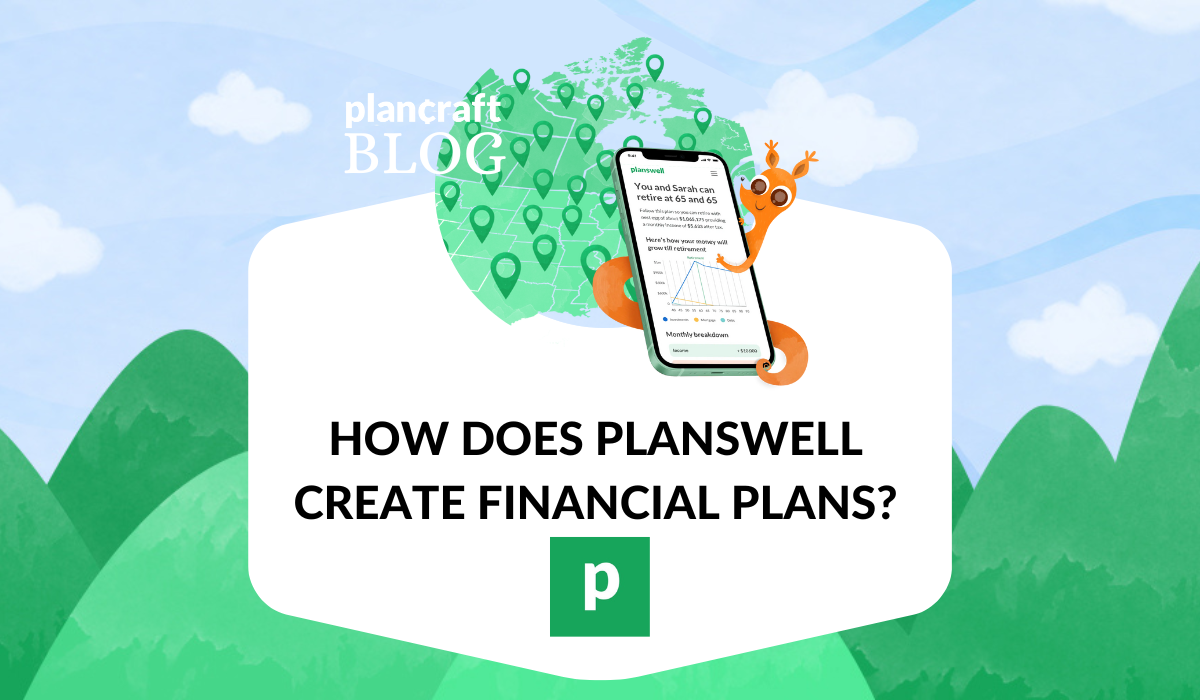You should keep in touch with your clients. You should nurture your prospects. You should provide ongoing value. You should be active on social media. You should send a weekly newsletter.
Have you been "shoulding" on yourself? Let me help.
Yes, content is king, but ohm'gosh it's a pain to be a content creator in addition to everything else you have to be as a financial advisor. Not the creative type? Give yourself a break. I'm here with an easy solution: share good content created by others. Specifically, Planswell.
Over at our Feel Better Blog for consumers, we publish articles with a wide appeal on a variety of topics related to personal finance. When you need to share something worthwhile on social media or in a newsletter, stop by and help yourself.
First, some precautions and best practices whether you're sharing Planswell's content or someone else's...
When Sharing Content Created by Others:
1. Review the content carefully for a hidden agenda, like an affiliate link. At Planswell, we never receive money for recommending products. Our blogs are purely educational.
🕶️Tip for Planswell partners: Share your unique Planswell link along with Planswell content, so your audience can build free financial plans that will land in your Planswell CRM.
2. Be sure the content is not recommending a financial product or investment. As you know, this would get you in hot water with regulators. We steer clear of that.
3. Review the content closely to be sure there is nothing potentially controversial lurking in images, paragraphs, quotes, etc. The biggest controversy we've ever published is a mere suggestion to buy generic toilet paper. Our blogs are safe, unless you're a brand ambassador for Charmin'.
4. Watch out for content driving readers to a competitive advisor. If the firm across the street authors something that makes them look brilliant, you probably don't want your clients to see it. Planswell does not compete with advisors—we're on the same team.
5. Make sure the content is free of grammatical mistakes and is well-composed. You don't want someone else's weaknesses dragging down your reputation. Rest assured, Planswell's content is quality-checked by marketing wizards.
Do:
-
Share a snippet or a quote from the content, along with the link to the full piece in it's original location.
-
Give credit to the creator.
-
Spur engagement by posing a question about the content to your audience. "What do you think, friends—can you make do with generic toilet paper?"
Don't:
-
Publish the content in full on your blog, in your newsletter, or on social media. That is plagiarism.
Finally, I've added previews below of the top 5 articles published to date by Planswell for consumers.
I hope your clients and prospects enjoy!
Generic Products That Are as Good or Better than the Real Thing
When generic goods first came on the market in the 1970s, they all had a distinctive white label with simple black lettering. The marketing behind the non-marketing was to convince consumers that manufacturers can produce goods cheaper if they don’t have to pay for logos, TV commercials, or package design, and therefore pass savings along to customers.
The ploy worked. We consumers took notice and were generally interested in reducing our tab at checkout. We started making buying decisions in the supermarket aisle vs. in front of the TV. Gamechanger!
Fast forward to today; the black and white labels are gone, replaced by “private label” or store brands that have managed to build brand loyalty of their own (read on for the top four off-brands we love). Nearly a quarter of all inventory on the shelves today is store-brand. And for the most part, it’s good stuff.
We’ve agreed on a top 10 list of products that don’t need a brand name, and we share them with you below. Also, we’ll reveal our ultimate, hands-down, favorite generic item of all time. We’re obsessed. Read more...
Even Cheapskates Splurge on These 19 Things
In some circles, being a cheapskate is taboo. (If you find yourself among The Joneses, you may want to consider getting new friends, but that’s another blog.) Here at Planswell, where we’re passionate about financial wellness, being frugal is a source of pride. Being smart with money is part of our culture.
Ideas flow freely at the virtual water cooler about how to save a few bucks here and there. It’s only in a circle of trust, however, when teammates admit they’re willing to spend top dollar on select indulgences. Recently, some of our resident cheapskates made some bold confessions, and we were there to capture them for you. We’ll lay out 19 splurge-worthy things according to our thrifty crew. Names have been withheld to protect the innocent.
To splurge or not to splurge
The short answer: sure. There are good reasons to break the budget from time to time. There is the psychological benefit of rewarding ourselves—enjoying the fruits of our labor makes life worth living after all. Also consider that some things are a better value when you spend more for quality. You may find yourself paying more over time by replacing a cheaper version frequently.
Another reason to splurge: some things increase in value. If you can swing it, it’s not a bad idea to invest in something that will pay dividends down the road. Think beyond stocks or real estate here; an “investment” can be anything that pays off later such as education, tools for a side hustle, or even wellness-related purchases. Investing in YOU is money well spent.
Without further ado, here are 19 things even the cheapest of cheapskates will spend good money on. Read more...
Buyer Beware: Think Twice Before Buying These Six Things
When my colleague Clover was younger, she spent $1,000 on a concert ticket, and fronted another $2,000 so two friends could join her at the show. As we all know, buying tickets in a single transaction is the only way to get seats together, and the friends committed, of course, to paying her back.
“Well, the concert was great,” she told me, “but my friends took a year to pay me back, without interest, because we were all broke. I had to email their parents every month to collect small payments.”
The Bank of Clover is now permanently closed. “Never again.”
Luckily, Clover has fully recovered from her financial mishap, but her story is a cautionary tale about buyers’ remorse. Any purchase that creates an ongoing financial burden can make us susceptible to the feelings of regret and anxiety we know as buyer’s remorse. Credit card debt, in-store financing, and mortgages all fall into the category of ongoing financial burden.
Becoming an unwilling debt collector in your friend group is certainly aggravating, but there’s a whole lot more at stake when it comes to bad financial decisions. Financial hardship is a prevailing root of divorce, depression, substance abuse, and even suicide. Obviously, not every dumb impulse buy will ruin your life, but it’s generally best to avoid the danger zone.
With a little help from my friends, I’ve rounded up ten of the most egregious, regret-inducing purchases any of us could make if we’re not informed. Thank you to the kind souls who shared their foolish mistakes for our benefit. Read more...
8 Things to Buy Cheap While Looking Rich
Need to tighten your belt, but don’t necessarily want everyone to know? We hear you. While we’re proud to be thrifty here at Team Planswell, we know there are times to keep this on the downlow. Your parents might worry. Your frienemies may snicker. A new love interest may be scared away. Sometimes, it’s best not to call attention to a little financial setback.
Below, we’ll lay out eight ways to cut costs without sounding the alarm bells. The good news: with some small adjustments, you can improve your current situation and hopefully live comfortably again in no time. Read more...
Do’s and Don’ts for Teaching Kids the Value of Money
As many o’ parents have learned the hard way, the earlier a child learns the value of money, the better. Even in a family with seemingly unlimited means, you’ll do your kids no favor by letting them think money grows on trees. Not only would they become entitled, they’d miss important life lessons on delaying gratification, goal-setting, and responsibility.
When is the right time to start introducing money concepts to children? Experts generally agree that by five or six years old, children can begin to grasp basics such as coin values, counting, and prices of small things they want. As kids grow and mature, financial lessons come with higher stakes—with much to gain besides material possessions.
Little humans benefit from feelings of accomplishment, security, and independence when participating in our economy. This translates to other important areas of their lives where they will need patience and planning skills.
When I think back to one of my earliest purchases, the feeling of empowerment still comes to the surface. I used gift money to purchase a little pink cassette player from a catalogue. The experience was so satisfying that it prompted me to join the workforce at 13 years old, and I’ve never looked back.
Wondering how to raise a productive member of society? I’ve crafted some do’s and don’ts after interviewing Planswell’s money experts, a few accomplished team members, and some inspiring parents. Read on if you’d like to retire someday rather than bankroll adult children. Read more...
We add new content to the Feel Better Blog as often as we can, so be sure to bookmark the page and visit often. Truth be told, our busy team struggles to keep up with content creation too! Please let my colleague Kristina know if our consumer articles are helpful to you—that will keep us motivated.






.png)


